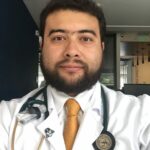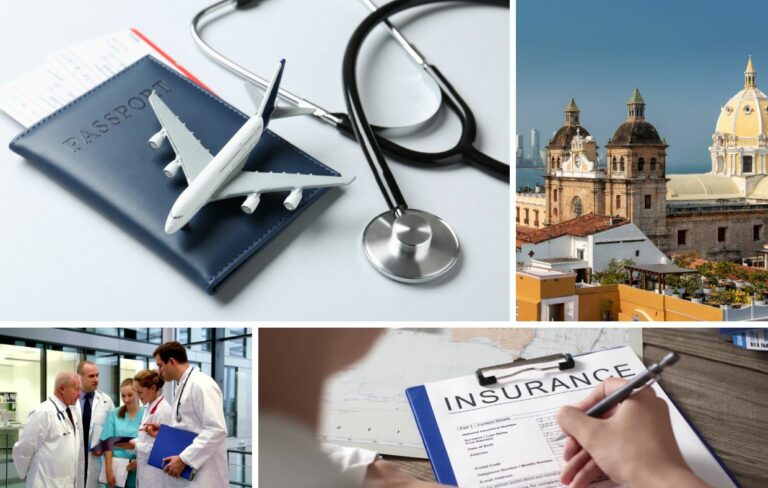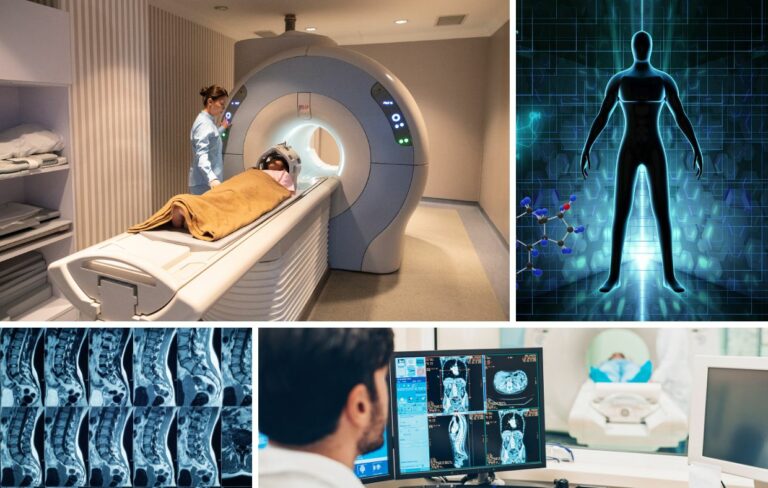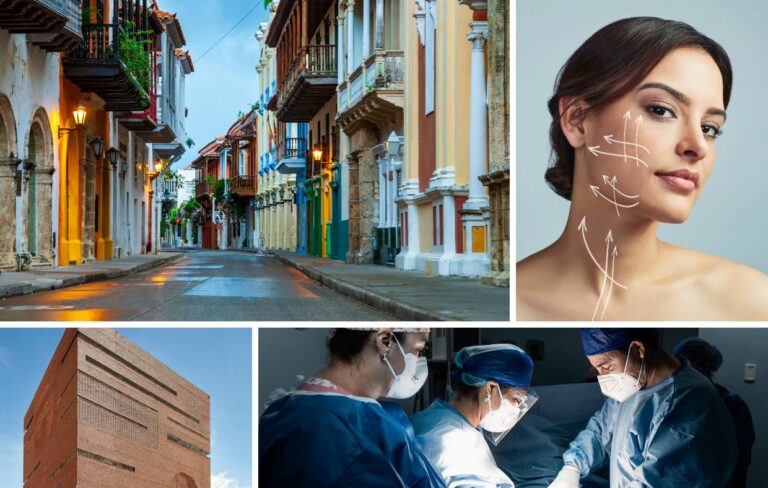Book Appointment Now
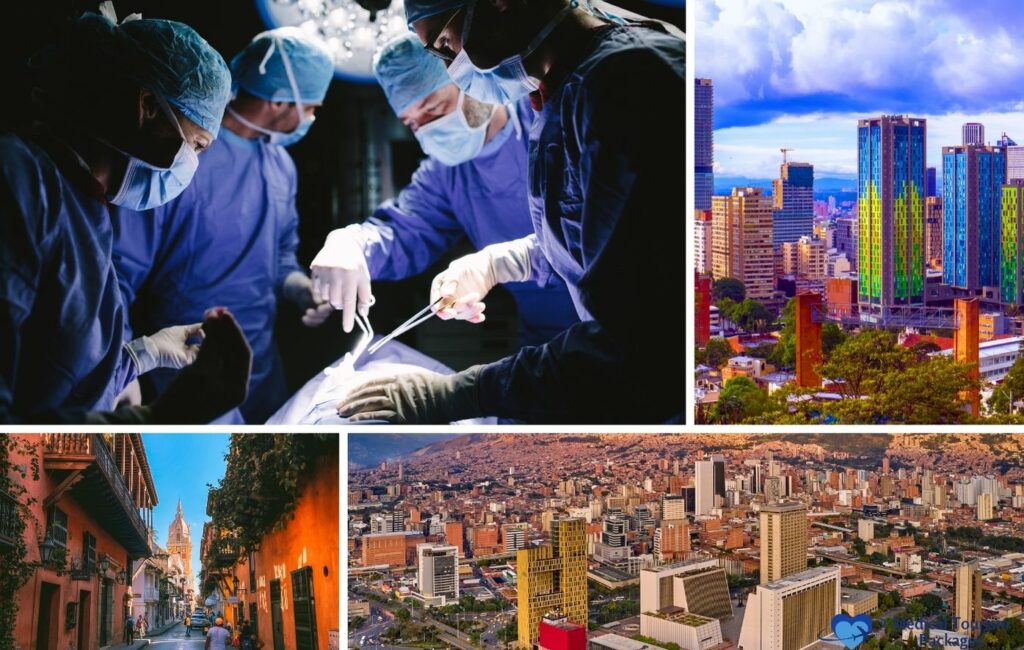
Your Ultimate Guide to All-Inclusive Plastic Surgery in Colombia
Join the 14-16 million patients worldwide choosing medical tourism annually. In Colombia alone, a comprehensive study of 658 international patients across 1,796 procedures shows why 66% of medical tourists come from the US, with 83% being women aged 20-54 seeking procedures that cost 40-70% less than home.
I’ve spent months researching the Colombian medical tourism scene for this 2025 update, talking to patients who’ve made the trip, interviewing surgeons, and visiting facilities firsthand. So grab a coffee—this guide breaks down everything you need to know about getting work done in Colombia without the financial hangover. While this guide focuses on Colombia, it’s worth noting that some premium medical tourism facilitators also offer curated experiences combining travel and medical care in other Latin American destinations like Panama and Costa Rica.
Why Choose Colombia for Cosmetic Surgery?
So why is everyone heading to Colombia? It’s a powerful combination: huge cost savings meet experienced, certified surgeons operating in modern clinics with advanced tech, all within a regulated system (but you still need to be smart about safety).
The Numbers Don’t Lie: Colombia’s Medical Tourism Success
Recent research analyzing 658 international patients and 1,796 cosmetic procedures in Colombia reveals:
- 83% of patients were women, 90% aged 20-54
- 66% came from the United States, 12% from Canada
- 72% received combination procedures (average 2.7 procedures per patient)
- 99% of cases performed under general anesthesia in accredited hospitals
- Professional demographics: 25% professionals, 21% managers, 14% technicians
- High satisfaction rates: Studies show 98.2% patient satisfaction in leading clinics
Body contouring procedures (think lipo, BBLs, tummy tucks) and breast surgeries are the biggest draws, which has created a massive pool of surgeons with tons of experience in these specific areas.
Why Professional Women Choose Colombia for Cosmetic Surgery
Research shows 83% of international patients are women, with 46% being professionals and managers. This demographic chooses Colombia for:
- Time efficiency: Combining procedures (72% opt for combination surgeries)
- Professional discretion: Private recovery facilities away from work environments
- Cost optimization: Significant savings allow for premium care options
- Vacation integration: Recovery in scenic, stress-free environments
Significant Cost Savings: Why Colombia is More Affordable
Here’s what everyone’s thinking about: cost savings run between 40-70% compared to the US, Canada, or Europe. Not chump change! A Lipo 360 + BBL package might set you back about $6,100 in Colombia versus a whopping $12,400+ in the States.
Why the huge difference? Lower cost of living means cheaper labor, supplies, and facility overhead. Surgeons also pay way less for malpractice insurance, and there’s fierce competition among doctors. Even after adding flights and accommodations, you’ll still walk away with serious savings.
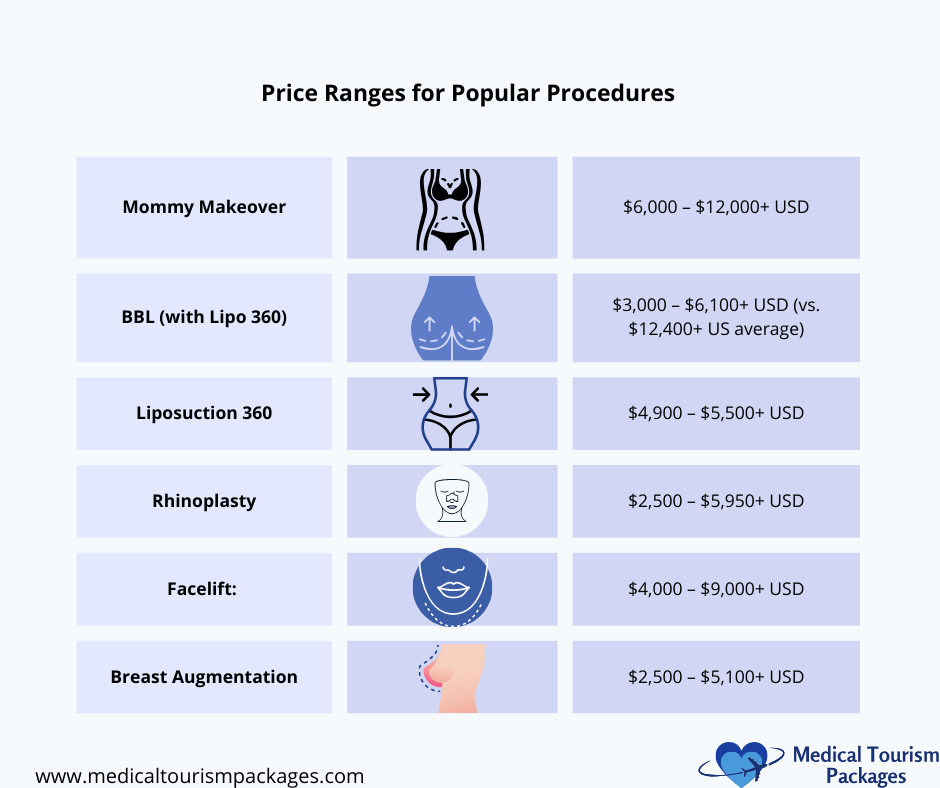
Surgeon Qualifications and Credentials in Colombia
The gold standard credential is membership in the Sociedad Colombiana de Cirugía Plástica Estética y Reconstructiva (SCCP), also known as the Colombian Society of Plastic Surgery. These surgeons completed hardcore 4-5 year plastic surgery residencies after medical school and follow strict ethical standards for all surgical procedures and aesthetic procedures. The Colombian Society of Plastic Surgery maintains rigorous certification requirements for surgeons performing procedures including body contouring, facial rejuvenation, and breast enhancement surgeries.
Don’t just take someone’s word for it—verify any surgeon’s SCCP membership yourself through their official site (cirugiaplastica.org.co). Many top surgeons also hold international credentials like ISAPS, ASPS, or the prestigious FACS (Fellow of the American College of Surgeons). Premium facilitators often emphasize partnerships with doctors holding such international memberships or board certifications.
Clinic Standards and Technology Available
The best clinics in Colombia are genuinely impressive. By law, facilities must be “habilitada” (authorized) by the local health secretariat under national regulations. For extra peace of mind, look for facilities within Joint Commission International (JCI) accredited hospitals—this is the international gold standard. Some facilitators specifically partner with internationally certified facilities (sometimes citing affiliations like Johns Hopkins International).
Colombian national accreditations to watch for include ICONTEC and membership in ASOCLICPER (the association of plastic surgery clinics). Many clinics use cutting-edge equipment like specialized lipo technologies and ultrasonic instruments for rhinoplasty.
Comprehensive Range of Surgical Procedures Available
Colombia offers a wide range of surgical procedures and aesthetic procedures that attract international patients. The Colombian Society of Plastic Surgery (SCCP) maintains strict standards for all procedures including:
Body Contouring Surgical Procedures:
- Surgical procedures like BBL, Lipo 360, and Tummy Tuck
- Advanced aesthetic procedures for body sculpting
- Combination packages featuring multiple procedures including full body transformations
Facial Aesthetic Procedures:
- Precision surgical procedures: Rhinoplasty, Facelift, Brow Lift
- Non-invasive aesthetic procedures: Botox, fillers, laser treatments
- Complex procedures including deep plane facelifts and revision surgeries
Breast Enhancement Options:
- Traditional surgical procedures: Augmentation, reduction, lift
- Modern aesthetic procedures with advanced implant technologies
- Specialized procedures including revision and reconstruction surgeries
The Colombian Society of Plastic Surgery ensures all surgical procedures and aesthetic procedures meet international safety standards, giving patients access to a wide range of options with qualified surgeons.
Comprehensive Safety Standards: INVIMA Regulations, Hospital Accreditation, and Patient Protection
Colombia has a decent governmental framework for healthcare regulation through the Ministry of Health. The rules say:
- Only qualified medical specialists can perform procedures
- Surgeries must happen in authorized clinics
- Patients must sign informed consent forms
- Medical devices and implants are regulated by INVIMA
- There are restrictions on misleading advertising
WARNING (Seriously, don’t skip this): Despite regulations, there’s a scary problem with unlicensed practitioners and dodgy “garage clinics” that operate outside the system. These places are dangerous as hell and can literally kill you. Official statistics often miss incidents from this underground sector.
There’s sometimes tension between Colombia’s push to grow medical tourism and proper safety enforcement. Bottom line: You MUST verify credentials and accreditations yourself—don’t just trust marketing or low prices.
Understanding All-Inclusive Plastic Surgery Packages
The whole point of a package is making your medical vacation simpler. But what does “all-inclusive” really mean?
Defining the “All-Inclusive” Concept
For surgery packages, “all-inclusive” typically bundles the main surgery costs (surgeon, anesthesia, facility) with support services (place to stay, transportation, basic recovery care). It aims to make costs predictable and logistics easier, but generally doesn’t cover your flights, comprehensive complication insurance, or revision surgeries.
What Services Are Typically Included?
Beyond basic surgical fees, packages often include:
- Comprehensive consultations covering your surgical procedures and aesthetic procedures (virtual and in-person)
- Detailed planning for procedures including combination surgeries and recovery timelines
- Access to Colombian Society of Plastic Surgery certified surgeons specializing in a wide range of techniques
- A place to recover (recovery houses, special suites, or partner hotels)
- Local rides (airport pickup/dropoff, clinic visits)
- Recovery support (nursing help ranging from periodic checks to 24/7 care, follow-up visits with your surgeon, lymphatic massages)
- Initial meds and supplies (like compression garments)
Convenience and Simplified Planning for Patients
For international patients, packages are a godsend—everything from surgery to recovery arrangements gets handled through one point of contact, saving you major logistics headaches when traveling abroad. Some facilitators specialize in comprehensive travel coordination, managing flights, ground transport, and all logistics.
Standard vs. Customized Package Options
Packages come in different flavors:
- Procedure-specific bundles (BBL, Mommy Makeover, etc.)
- Tiered options (basic vs. fancy, with better accommodations and more intensive nursing)
- Customizable packages where you can adjust services
- Packages offered directly by clinics or through medical tourism facilitators. Facilitators act as intermediaries, often curating premium, bespoke experiences that might include cultural immersion alongside medical procedures. Some operate across multiple Latin American countries.
Key Benefits of Booking a Colombian Surgery Package
There are some solid perks to going the package route.
- Streamlined Patient Experience: Packages provide a clear path from your first inquiry and virtual consultation through arrival, surgery, recovery, and departure—super helpful when navigating healthcare in another country. Premium facilitators often provide dedicated concierge teams and native English-speaking experts.
- Potential Cost-Effectiveness of Packages: Bundling services often gives you better value and makes it easier to budget since you know most costs upfront.
- Comprehensive Post-Operative Support: The post-op care is a huge benefit—having somewhere to recover with nursing help, follow-ups, and therapies like lymphatic massages is crucial when you’re thousands of miles from home, especially if you’re traveling solo. Premium packages may offer enhanced post-procedural care integrated into luxury accommodations.
- Reduced Stress and Increased Peace of Mind: Having logistics handled and structured support reduces anxiety, which matters when you’re recovering from surgery in a foreign country. Knowing complication insurance is available or included adds peace of mind.
- Combining High-Quality Treatment with Travel: Packages let you access excellent medical care while also experiencing Colombia—though honestly, you’ll probably focus more on recovery than sightseeing. Some premium facilitators explicitly design packages around cultural immersion (“Caribbean Renewal,” “Andean Serenity,” “Elevate Your Look”) tailored to recovery timelines.
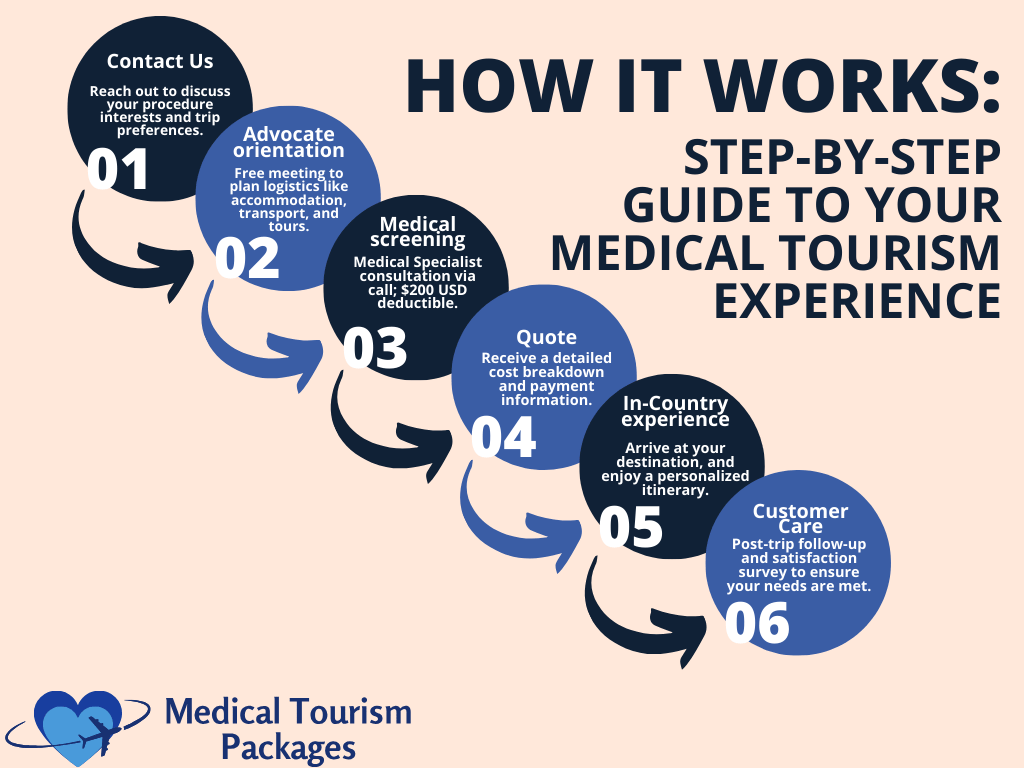
Key Accreditation & Certification Bodies for Colombian Surgery
When researching plastic surgeons and clinics in Colombia, verifying credentials and accreditations is essential for safety and quality assurance. Here are some key organizations mentioned and links to their official sites:
Surgeon Credentials:
- Sociedad Colombiana de Cirugía Plástica Estética y Reconstructiva (SCCP)
- The primary professional body for board-certified plastic surgeons in Colombia. Membership indicates completion of rigorous residency training. Verification here is critical.
- Website: http://cirugiaplastica.org.co/ (Use their directory to verify surgeon membership)
- A leading global professional body for board-certified aesthetic plastic surgeons.
- A major professional organization for board-certified plastic surgeons, primarily in the US, but some international members exist.
- Indicates that a surgeon’s education, training, professional qualifications, surgical competence, and ethical conduct have passed a rigorous evaluation by the American College of Surgeons.
Clinic & Facility Standards:
- Local Health Secretariats (“Habilitada” Status)
- Clinics must be authorized (“habilitada”) by the local governmental health authority to operate legally. This verification is typically done locally and may not have a single central online database for all of Colombia. Ask the clinic for proof of their habilitación.
- A recognized global leader in health care accreditation, focusing on patient safety and quality of care. Accreditation (often held by hospitals where clinics might be located) is a high standard.
- The Colombian national body for technical standards and certification, offering voluntary quality accreditations for various sectors, including healthcare.
- An association representing plastic surgery clinics in Colombia. Membership can indicate a commitment to certain standards.
Device & Product Regulation:
- INVIMA (Instituto Nacional de Vigilancia de Medicamentos y Alimentos)
- Colombia’s national agency responsible for regulating medicines, medical devices (including implants), and food products.
- Website: https://www.invima.gov.co/
Note: Always perform your own independent verification using these official sources. Do not rely solely on information provided by the clinic or facilitator.
Evidence-Based Safety Record
A comprehensive analysis of Colombian medical tourism shows impressive safety statistics:
- 100% of procedures performed in accredited hospital facilities
- Standardized pre-operative screening for all international patients
- 99% of cases utilizing general anesthesia with certified anesthesiologists
- Rigorous post-operative monitoring protocols
Anatomy of a Colombian Plastic Surgery Package: Typical Inclusions
Knowing what’s typically included helps you compare apples to apples. Here’s the usual breakdown:
- Surgical, Anesthesia, and Facility Fees: This covers your surgeon, anesthesiologist, operating room, equipment, and facility staff.
- Pre-Operative Consultations and Evaluations: Initial virtual consults and essential in-person meetings with your surgeon and anesthesiologist before surgery. Basic pre-op lab work might be included (ask to confirm). Premium providers may emphasize 3-5x longer consultation times compared to domestic care.
- Accommodation: Recovery Houses and Partner Hotels: You’ll get a specific length of stay (typically 10-21 days) in a recovery house, suite, or partner hotel. Premium packages often feature five-star accommodations selected for luxury and ambiance, catering to sophisticated travelers.
- Comprehensive Post-Operative Care and Supplies: This includes nursing help (from periodic checks to round-the-clock support), follow-up visits with your surgeon, a set number of lymphatic massages/therapies, your first compression garments, initial post-surgery medications (painkillers, antibiotics), and supplies like anti-embolism stockings. Enhanced care integrated into luxury settings might be offered in high-end packages.
- Logistics: Transportation Management: Ground transportation for airport pickup/dropoff and rides to clinic appointments. Comprehensive travel coordination (including flights) may be offered by facilitators.
Most Popular Combination Procedures
Based on analysis of 1,796 procedures:
- Body contouring combinations (Lipo 360 + BBL): Most requested by North American patients
- Mommy Makeover packages: Breast + abdominal procedures combined
- Facial rejuvenation series: Often combined with body procedures
- Average 2.7 procedures per patient for optimal results and cost efficiency
Potential Package Extras
- Meals: May be included (especially in recovery houses).
- Complication Insurance: Ask specifically if any complication insurance is part of the deal. Some facilitators explicitly offer policies at affordable prices.
- Bespoke Tourism: Premium packages might include privately guided tours tailored to your interests and recovery.
- Documentation Assistance: Some facilitators offer support with visas and other international travel documents.
- Enhanced Privacy: High-end packages often guarantee discretion and private settings exceeding typical standards.
The Patient Journey: Step-by-Step Process
Medical tourism to Colombia involves six key phases: research and virtual consultation; provider selection and booking arrangements including vital medical complication insurance; early arrival in Colombia (2-3 days minimum, longer for long-haul flights); the procedure itself; an essential in-country recovery period of 1-4+ weeks; and final check-ups before returning home—with the caution that post-return complications may be challenging to manage locally.RetryClaude can make mistakes. Please double-check responses.
Phase 1: Initial Research and Virtual Consultation
You’ll do online research, contact providers (clinics or facilitators), send photos/medical history, have a virtual consultation to discuss goals, get a preliminary plan, and receive package quotes.
Phase 2: Choosing Provider, Booking, and Arrangements
Select your provider/package, pay a deposit, arrange any pre-op tests (possibly at home), book flights (or have facilitator coordinate), and secure medical complication insurance (if not included—and it usually isn’t).
Phase 3: Arrival in Colombia and Pre-Surgery Preparations
Get to Colombia at least 2-3 days before surgery (potentially longer, like 6+ days, if your flight exceeds 4 hours, to reduce blood clot risk). You’ll be picked up at the airport, settle into your accommodations, have final in-person consultations, sign consent forms, and make final payments.
Phase 4: The Day of Your Procedure
You’ll arrive at the facility (fasting), go through final checks, get surgical markings, have your procedure, be monitored in recovery, and then transfer to your accommodation with initial nursing support.
Phase 5: In-Country Recovery Period
This crucial phase lasts 1-4+ weeks depending on your procedure. You’ll rest, manage pain, receive nursing care, have follow-ups with your surgeon, handle drains (if used), wear compression garments, start therapies, and begin light activity (walking) to promote circulation.
Phase 6: Final Check-up, Departure, and Follow-Up
You’ll have a final check-up with your surgeon, get clearance to travel, and receive home care instructions. Remote follow-up is often available, but managing complications back home can be tricky (local doctors may hesitate to treat you).
Selecting the Right Provider and Package
Do your homework! Here’s how:
Verifying Surgeon Credentials and Experience
MUST-DO: Verify SCCP membership using their official directory. Look for additional international credentials (ISAPS, ASPS, FACS). Ask about their specific experience with your procedure and request relevant before/after photos. Facilitators should be transparent about their partner surgeons’ credentials.
Evaluating Clinic Accreditation and Safety
Confirm the facility is “habilitada” by the local Health Secretariat. Prioritize clinics in JCI-accredited hospitals or those with recognized accreditations (ICONTEC, ASOCLICPER). Make sure the facility has proper emergency capabilities and protocols. Ask facilitators about the accreditation of their partner facilities.
Comparing Packages: Inclusions vs. Exclusions
Get itemized lists of what’s included/excluded. Look closely at the accommodation type/duration, nursing level, number of massages, and confirm whether complication insurance is included (it typically isn’t). Identify all potential extra costs. Compare standard packages versus premium offerings from facilitators if seeking a higher level of service or cultural integration.
Using Patient Reviews and Before/After Galleries
Check independent review platforms like RealSelf, but take them with a grain of salt. Study before/after galleries critically, looking for consistency and natural results. Look for testimonials specific to facilitators if considering one (e.g., MTP cites 97% exceptional/excellent ratings).
Key Questions to Ask Potential Providers
- Are you SCCP certified? (Then verify independently!)
- Where exactly will surgery happen? What’s its accreditation status?
- What are the emergency protocols?
- What’s your experience and complication rate for my procedure?
- Can I see relevant before/after photos?
- What’s itemized as included/excluded in the price?
- Is medical complication insurance included? What are the terms? Can you help arrange it?
- What’s your protocol for managing major complications?
- What level/duration of nursing care is provided post-op?
- How long should I stay in Colombia for recovery?
- How is follow-up handled after I return home?
- (If using a facilitator): Can you detail your coordination process? Do you have English-speaking staff on the ground?
Popular Destinations for Plastic Surgery in Colombia
Major cities offer different advantages. While some facilitators offer packages across Latin America (including Panama and Costa Rica, known for specific appeals like cosmopolitan settings or wellness retreats), Colombia remains a primary hub.
Bogotá: Hub for Top Surgeons and Clinics
The capital has loads of experienced surgeons, JCI-accredited hospitals, and clinics. Some providers working in Bogotá include Dr. Mauricio Serrano, Dr. Tatiana Luna, Cuerpo10, Dr. Juan Carlos Monroy (Ciruplastia), Luxury Recovery Suites, Body Harmony, Instituto Felipe Amaya, Universal Medical Travel, and Absolute Medical Tourism. Good flight connectivity is a plus. Facilitators often feature Bogotá for its “sophisticated urban setting.”
Medellín: Renowned for Quality Care and Recovery
Medellín is popular for its pleasant climate, top-ranked hospitals, reputable JCI-accredited clinics, and strong reputation for body contouring and recovery facilities. Often highlighted for its “Andean Serenity” appeal in curated packages.
Cartagena: Combining Surgery and Tourism
Cartagena lets you recover in a gorgeous tourist destination. Clinics often promote luxury recovery options with that Caribbean backdrop, sometimes marketed as a “Caribbean Renewal” experience.
Exploring Options in Cali and Other Cities
Cali is another major plastic surgery hub. Other cities offer services too, but thorough vetting remains essential everywhere.
Transparent Pricing and Cost-Effectiveness: 40-70% Savings on Quality Procedures
Let’s talk figures. Estimated 2025 all-inclusive package ranges (typically excluding flights & complication insurance):
- Mommy Makeover: $6,000 – $12,000+ USD
- BBL (with Lipo 360): $3,000 – $6,100+ USD (vs. $12,400+ US average)
- Liposuction 360: $4,900 – $5,500+ USD
- Rhinoplasty: $2,500 – $5,950+ USD
- Facelift: $4,000 – $9,000+ USD (Deep plane higher, potentially $11,000+)
- Breast Augmentation: $2,500 – $5,100+ USD
Important caveat: These ranges vary widely; inclusions differ; flights/insurance/complications are extra.
Factors Influencing Package Prices
Package prices vary based on:
- Surgeon’s reputation/experience
- Clinic prestige/accreditation/location
- Procedure complexity and combinations
- Technology used (e.g., ultrasonic rhinoplasty, BodyTite/J-Plasma)
- Implants/materials quality
- Accommodation standard/duration and included services (Premium packages with luxury stays and bespoke tours will cost more)
Pricing Transparency and Red Flags
Look for clear, itemized quotes. Run from vague or “too good to be true” prices, which often hide costs or cut corners on safety. Avoid providers using aggressive marketing, raffles, or high-pressure sales tactics.
Budgeting for Additional Costs
Set aside money for:
- International flights
- Medical complication insurance (ESSENTIAL)
- Standard travel insurance
- Personal expenses (meals not included, shopping)
- Potential complication treatment costs
- Possible visa fees
- Extra garments beyond the initial set
Financing Options for Medical Tourism
Options include personal savings, home country personal loans/credit cards, specialized medical tourism financing companies (LightStream, Prosper Healthcare Lending, PatientFi), or potentially clinic payment plans (less common for packages). Remember: Regular health insurance from the US/Canada typically won’t cover elective cosmetic surgery abroad.
Key Considerations Before Booking Your Trip
Some critical points to consider before committing.
Understanding Recovery Timelines and Expectations
Surgery isn’t a walk in the park. Swelling, bruising, and discomfort are normal. Results evolve over months. Be skeptical of guarantees of perfection. Premium providers may emphasize longer, more detailed consultations to ensure alignment. Here’s a rough recovery timeline for popular procedures:
- Mommy Makeover:
- Initial Recovery: 2-4 weeks of serious downtime
- Back to Desk Work: ~2-4 weeks (physical jobs: 4-6+ weeks)
- No Heavy Lifting: 6+ weeks
- No Serious Exercise: ~6-8 weeks or more
- Final Results: 6-12 months as swelling resolves
- Recommended Colombia Stay: 20-30 days
- No Direct Sitting: 2-3+ weeks (special pillow needed)
- Back to Desk Work: ~3 days – 2 weeks (physical jobs: 3-6 weeks)
- Splint/Cast Removal: ~1 week
- Back to Easy Work: ~1 week
- Heavy Bruising/Swelling: First 1-2 weeks
(Individual recovery varies—talk to your surgeon)
Understanding Surgical and Travel-Related Risks
All surgery has risks (infection, bleeding, anesthesia issues, bad scarring, asymmetry, disappointing results). Medical tourism adds specific risks:
- Travel Complications: Deep vein thrombosis/pulmonary embolism risk increases with long flights (>4 hours) combined with surgery. Don’t fly too soon after surgery.
- Weird Infections: Risk of surgical site infections, potentially including unusual bacteria due to different environments or varying standards.
- Follow-up Problems: Difficulty managing complications when you get home; local doctors may lack info or be reluctant to get involved.
- Language Issues: Potential for misunderstandings despite translator help.
- Quality Variations: Standards can differ wildly from US/Canada, especially outside accredited facilities.
- Legal Headaches: Getting compensation across borders is extremely difficult.
- General Travel Risks: Check government travel advisories for current safety info about crime or regional health issues (like Dengue or Yellow Fever).
Choose verified surgeons and accredited facilities, understand all risks, and get robust insurance. Some studies suggest medical tourists may face slightly higher complication rates than local patients if rigorous protocols aren’t followed. That said, good clinics show excellent outcomes (one Cartagena study reported 98.2% satisfaction among international patients).
The Critical Importance of Medical Complication Insurance
Standard Travel Insurance ISN’T ENOUGH: It typically excludes complications from elective procedures.
You NEED Specialized Medical Tourism Insurance: Get a dedicated policy covering costs of treating surgical complications. Make sure it covers:
- Treatment both in Colombia AND back home
- High enough limits (complications can cost tens of thousands)
- Adequate duration (e.g., 180 days post-op)
- Extra travel/accommodation if needed due to complications
Cost: Factor this premium into your budget (research showed ~$622 for $25k coverage on a $7.5k surgery). Being uninsured can financially destroy you. Ask if your package includes this or if they recommend specific insurers (like GPS). Some facilitators explicitly offer or bundle this insurance. This insurance is NON-NEGOTIABLE.
Regular Travel Medical Insurance: Also get this for non-surgery emergencies (accidents, illness) and evacuation.
Communication and Language Considerations
Make sure the clinic has bilingual staff or interpreters. Premium facilitators often highlight having native English-speaking staff available for coordination. Verify consent forms and instructions come in a language you completely understand.
Ready to Start Your Journey? Next Steps
If you’re ready to explore options in Colombia, working with a specialized medical tourism facilitator can streamline the entire process.
Contacting a Specialized Facilitator
Why stress over finding the right doctor and clinic? Just reach out to Medical Tourism Packages. We’ve already done the hard work—we only partner with board-certified surgeons and accredited clinics we trust. We’ll handle all the annoying details like travel and accommodation too, leaving you free to focus on what matters: your procedure and getting better.
Preparing for Your Consultation
Gather your medical history, medication/allergy list, and clear photos. Write down specific questions about your desired procedures, potential results, recovery expectations, and also discuss the type of experience you’re looking for (e.g., cultural immersion, relaxation). Be ready to discuss your budget and timeline.
Final Pre-Travel Checklist
- Verified Surgeon (Facilitator should confirm SCCP/Board Certification) & Facility Credentials (Accredited)
- Detailed Package Quote (Itemized, including facilitator services)
- Comprehensive Medical Complication Insurance (Confirm arrangement via facilitator)
- Standard Travel Insurance
- Flights (Confirm coordination if handled by facilitator)
- Valid Passport (& Visa if needed)
- Pre-Op Tests Completed
- Pre-Travel Instructions Understood (Meds to avoid, quit smoking)
- Money Arranged (Package + Flights + Insurance + Spending Money + Emergency Fund)
- Realistic Expectations Set
- Post-Op Support Plan (Confirm details of care)
- Communication Plan (Coordinator/Facilitator contacts)
Ready for a seamless experience? Contact a specialized facilitator like Medical Tourism Packages to discuss your bespoke Colombian cosmetic journey today.
Frequently Asked Quesitons
Why is Colombia a popular destination for plastic surgery?
Colombia is favored for plastic surgery due to its combination of affordability, experienced board-certified surgeons, modern clinics, and strong regulatory frameworks. Cost savings of 40-70% compared to the US and high patient satisfaction rates have made it a leading hub for procedures like liposuction, BBLs, and breast surgeries.
How much can I save by getting plastic surgery in Colombia?
Patients can typically save 40-70% on procedures compared to prices in the US, Canada, or Europe. For example, a Lipo 360 + BBL in Colombia might cost around $6,100, compared to over $12,400 in the United States—even after adding travel expenses.
What qualifications should a Colombian plastic surgeon have?
The gold standard is SCCP (Sociedad Colombiana de Cirugía Plástica) certification. Many top surgeons also hold international memberships like ISAPS, ASPS, or FACS. Always verify credentials through official directories to ensure safety and legitimacy.
What’s included in an all-inclusive plastic surgery package in Colombia?
All-inclusive packages generally cover surgical costs (surgeon, anesthesia, facility), recovery accommodations, transportation, nursing care, medications, compression garments, and post-op support. Flights, travel insurance, and complication insurance are usually not included.
How can I verify a Colombian clinic’s accreditation?
Ensure the clinic is “habilitada” by the local Health Secretariat. Look for international accreditations like JCI, or national ones like ICONTEC or ASOCLICPER. Ask for proof of accreditation and verify it directly when possible.
What are the risks of getting plastic surgery in Colombia?
Risks include surgical complications, infections, travel-related issues like blood clots, and challenges with follow-up care. The biggest danger is from unlicensed providers operating illegally. Always verify surgeon and clinic credentials, and secure proper insurance to mitigate risks.
Do I need special insurance for surgery abroad?
Yes, standard travel insurance doesn’t cover elective surgery complications. You need specialized medical complication insurance that includes coverage both in Colombia and back home, with high enough limits and extended post-op coverage. It’s essential for financial protection.
How long should I stay in Colombia after surgery?
Recovery stays range from 6 to 30 days depending on the procedure. For example, rhinoplasty may require around 8 days, while a Mommy Makeover could mean staying 20-30 days. Always follow your surgeon’s guidance for safe recovery before flying home.
What makes Colombia’s plastic surgeons among the best globally?
Colombian surgeons complete rigorous 4-5 year residencies and many hold international certifications from ISAPS, ASPS, and FACS. Research shows 99% of procedures are performed in accredited hospital facilities.
How safe is plastic surgery in Colombia compared to other countries?
Studies of 658 international patients show excellent safety records when choosing accredited facilities and board-certified surgeons. 100% of procedures in the research were performed in accredited hospitals.
What’s the typical profile of patients choosing Colombia?
Research reveals 83% are women, 90% aged 20-54, with 46% being professionals or managers primarily from the US (66%) and Canada (12%).

